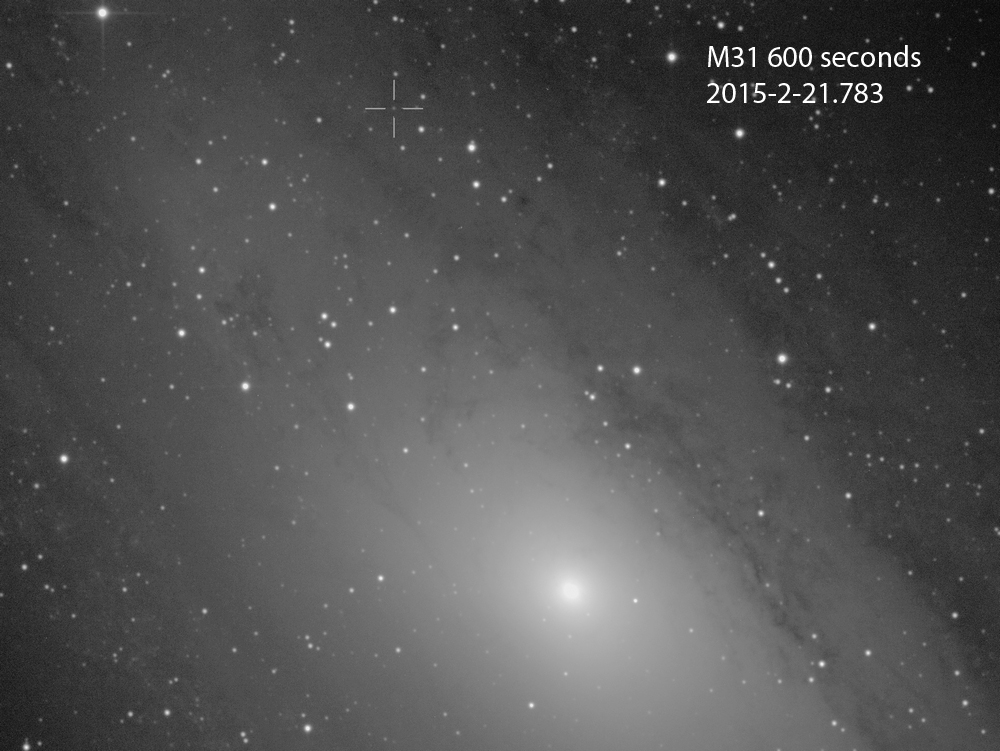6th February
Asteroid 2004 BL86I am taking images of this each clear night as it speeds away from Earth.
On the 6th February it was 15,052,538 km away, equivalent in angular size to a £1 coin at 1019 km distance.
This is a 10 minute exposure. The asteroid makes a small trail in the centre of the image.

If the RA and DEC drift values from the ephemeris are plotted against time, it can be seen that
superimposed on the gradual decrease is a sinusoidal component. The asteroid's motion is smooth
so this has to be due to the Earth's motion. Each day my observatory travels around a
circle of diameter 7885.55 km. This introduces a parallax in the asteroid's position against
the background stars.

There is a bright Moon at the moment, but the Ha filter does not care.
This is 26 x 10 minutes.

8th February
Rapidly thickening cloud hindered observations, but asteroid 2004 BL86 at 17,809,178 km is still detectable.
30 second exposure

9th February
Asteroid now at 19,170,219 km. Cloud still a problem. This is a single 10 minute exposure:

16th February
Asteroid 2004 BL86 now at 28,873,885 km or 17,941,400 miles from Earth.
Magnitude 17.47
This is a single 10 minute exposure. No Moon, no clouds, seeing very good.

Animation. 2 frames, 45 minutes apart. Asteroid at centre of image.

Astrometry
The asteroid was at exactly the predicted position.

Getting an image of a 325 metre asteroid at 28,873,885 km is equivalent to seeing a pound coin in Ukraine.

21st February
M31 I missed discovering this nova by 4 hours 47 minutes. Maybe one day...

The asteroid is still within range of my scope at 36,464,419 km

This animation shows four 10 minute frames.
Asteroid at centre of image. Note that the declination is now decreasing so the asteroid is moving downwards.

24th February
The sky was clear so I set up to get the asteroid again. Clouds arrived so this is a 10 minute shot through hazy cloud:

The asteroid was 39,556,445 km or 24,579,235 miles away.
The galaxy in the image is ngc 3622
26th February
Clear skies. Asteroid now very dim (magnitude 18.35, distance 42,257,958 km, 26,257,878 miles)
On images with the scope tracking the stars the asteroid moved enough to smear the image
making it hard to detect.
I set the mount to follow the asteroid with a drift of -0.32 arc sec per minute in RA and -0.35 arc sec per minute in DEC.
This kept photons from the asteroid on the same group of pixels, and a clear image was obtained.
10 minute exposure.

The magnitude of the asteroid will decrease until it is undetectable by my equipment.
It will stay that way until about 2050 when it will get closer to the Earth (but not as close as this year).
This shows how the distance varies over the next few years:
